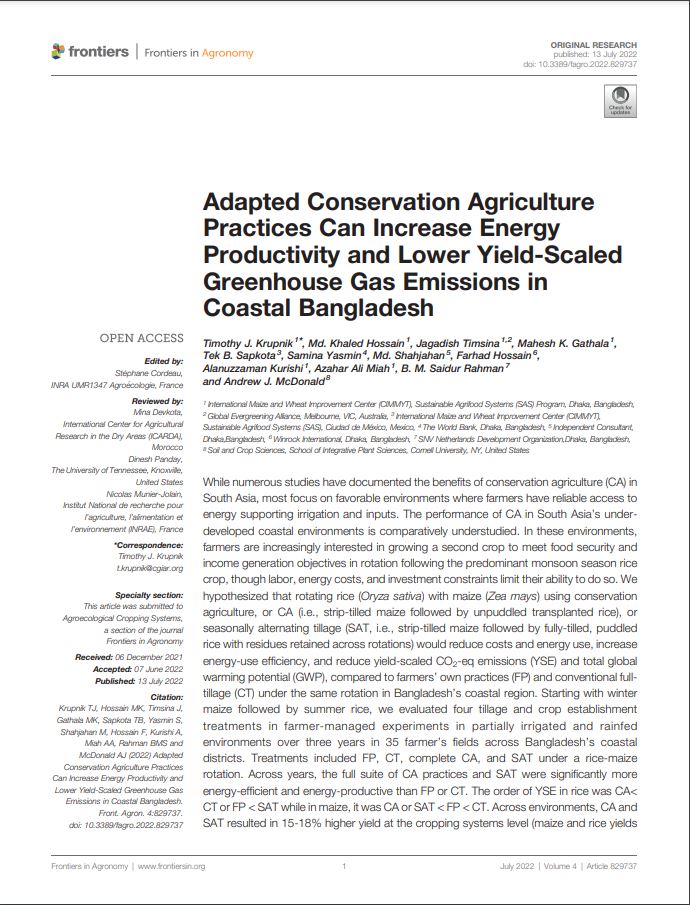While numerous studies have documented the benefits of conservation agriculture (CA) in South Asia, most focus on favorable environments where farmers have reliable access to energy supporting irrigation and inputs. The performance of CA in South Asia’s under-developed coastal environments is comparatively understudied. In these environments, farmers are increasingly interested in growing a second crop to meet food security and income generation objectives in rotation following the predominant monsoon season rice crop, though labor, energy costs, and investment constraints limit their ability to do so. We hypothesized that rotating rice (Oryza sativa) with maize (Zea mays) using conservation agriculture, or CA (i.e., strip-tilled maize followed by unpuddled transplanted rice), or seasonally alternating tillage (SAT, i.e., strip-tilled maize followed by fully-tilled, puddled rice with residues retained across rotations) would reduce costs and energy use, increase energy-use efficiency, and reduce yield-scaled CO2-eq emissions (YSE) and total global warming potential (GWP), compared to farmers’ own practices (FP) and conventional full-tillage (CT) under the same rotation in Bangladesh’s coastal region. Starting with winter maize followed by summer rice, we evaluated four tillage and crop establishment treatments in farmer-managed experiments in partially irrigated and rainfed environments over three years in 35 farmer’s fields across Bangladesh’s coastal districts. Treatments included FP, CT, complete CA, and SAT under a rice-maize rotation. Across years, the full suite of CA practices and SAT were significantly more energy-efficient and energy-productive than FP or CT. The order of YSE in rice was CA< CT or FP < SAT while in maize, it was CA or SAT < FP < CT. Across environments, CA and SAT resulted in 15-18% higher yield at the cropping systems level (maize and rice yields combined) and 26-40% less manual labor than CT or FP. CA and SAT also reduced by 1-12% and 33-35% total production costs respective to CT and FP. This was associated with 13-17% greater grain energy output in CA and SAT, and 2-18% lower YSE, compared to CT or FP. While our data suggest that both CA and SAT can result in a range of positive agronomic, economic, and environmental outcomes compared to FP or CT, post-trial surveys and discussions with farmers revealed a strong practical aversion to use of the full suite of CA practices and preference for adapted practices due to logistical constraints in negotiating the hire of laborers for unpuddled manual transplanting.

